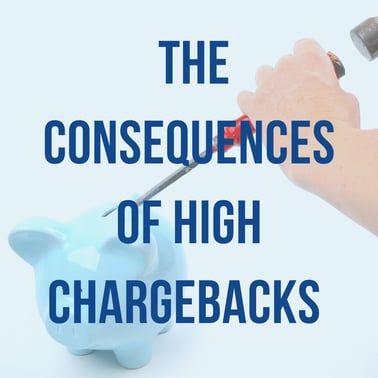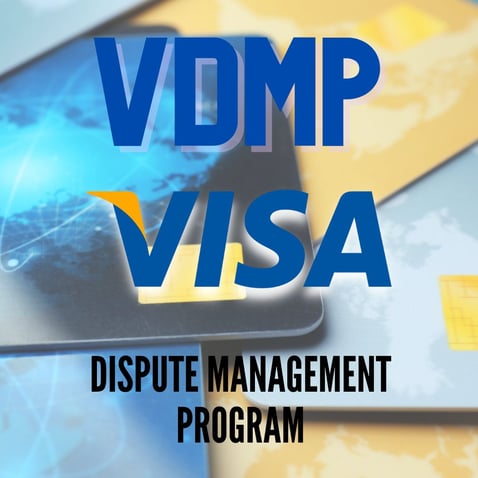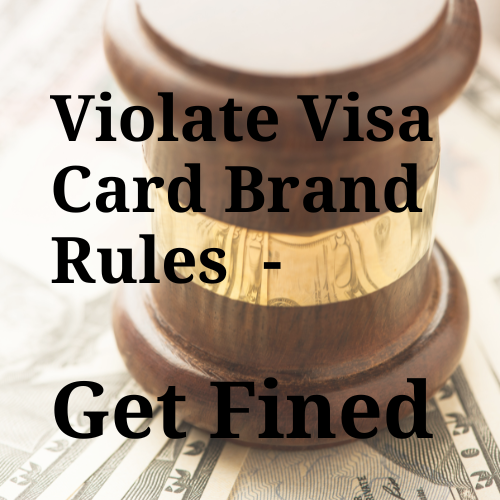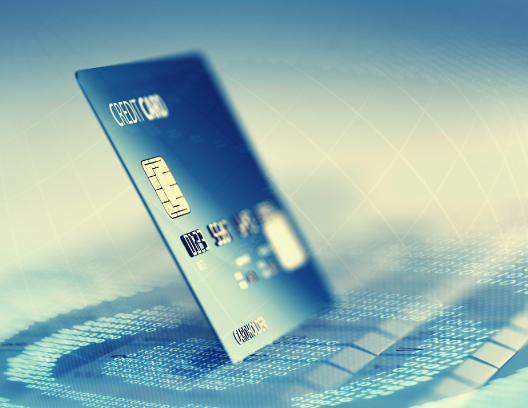 One of the unfortunate side effects of utilizing credit card processing in your business is the increased possibility of chargebacks. Unfortunately, if you accept credit cards as a payment method in your business, you’ll likely experience at least some chargebacks. But, if you are unfamiliar with the term, you may be wondering what exactly chargebacks are. Also, you may wonder how they affect your merchant account.
One of the unfortunate side effects of utilizing credit card processing in your business is the increased possibility of chargebacks. Unfortunately, if you accept credit cards as a payment method in your business, you’ll likely experience at least some chargebacks. But, if you are unfamiliar with the term, you may be wondering what exactly chargebacks are. Also, you may wonder how they affect your merchant account.
Chargebacks, or payment disputes, are the reversal of funds after a customer has filed a credit card dispute with their bank. In other words, a chargeback happens when a customer contacts their bank to challenge a purchase made with their card. This could be due to not receiving the correct item, a fraudulent transaction, or another reason.
The goal of chargebacks is to act as a level of protection for the consumer, and they were introduced in the Fair Credit Billing Act of 1974. Unfortunately, not all chargebacks are filed for the right reasons. And some individuals try to take advantage of this protection mechanism. We will dive more into this later on. For now, let’s explore a bit more about what chargebacks are and what they are not.
Chargeback vs. Refund
Many people may look at the description of a chargeback and think it is the same as a refund. While they share some aspects, it is important to note that a chargeback is not a refund.
There are a few key differences between chargebacks and refunds. These are:
- Who starts the process: In a refund, the process is initiated by the business owner, but in a chargeback, the customer’s bank initiates the process.
- Who the customer interacts with: In a chargeback, the bank interacts with the business on the customer’s behalf, whereas, in a refund, the customer and the business communicate directly.
- What happens to the funds: in a chargeback, the funds are held in a third-party location until the issue is resolved. In a refund, your company can simply ask your payment processor to return the funds to the customer.
- The length of the process: chargebacks typically take longer than refunds. They are specific timelines set by the bank for the business to respond and the filing to be resolved. Refunds can happen very quickly and mostly depend on the bank’s processing timelines.
Reasons for Chargebacks
As we mentioned above, not everyone follows the rules for using chargebacks the right way. Because of this, it is important to distinguish between the valid and invalid uses of chargebacks.
Valid
There are only three instances when a chargeback is a valid chargeback. These are in the case of a fraudulent transaction, billing error, or unresolved customer concern. Here, we’ll dive into each of these three cases in more detail.
- Unauthorized transactions. The customer could make a chargeback dispute if the purchase was a fraudulent transaction.
- Billing errors. Any incorrect purchase information, failure to give credit for a return, or any other billing error is valid grounds for a chargeback.
- Unresolved customer concerns. If the customer is not satisfied with the merchant’s response to their concern about the quality of the product or another issue with it, they may dispute the charge.
Invalid

Any other use of a chargeback is inherently invalid. But, there are a few cases here that we’ll bring attention to. These three instances are some of the most common reasons for invalid chargebacks.
- Not recognizing the transaction. Sometimes people make mistakes. If customers don’t recognize the name or forget about the purchase, they may dispute the transaction.
- Avoiding the return process. This is when a customer finds your return process too complicated, misses the return deadline, or can otherwise no longer return the item and dispute the purchase.
- Claiming a legitimate purchase as a fraudulent transaction, or claiming the item was never delivered. This is often referred to as “friendly fraud.” This is when a customer makes a purchase but disputes it with their bank to avoid paying for the item they purchased.
How Chargebacks Affect Your Merchant Account
Now that you know what chargebacks are, you may wonder how they can affect your business. Unfortunately, even if you are successful in fighting chargebacks, there are lasting damages that can affect your business.
Loss of Revenue
The biggest immediate effect of chargebacks on your business is financial loss. Not only do you lose the money that the customer paid you, but you also lose the product you provided them. This is because, unlike with a return, a chargeback does not ensure that you get your product or service back — something that many people abuse to get free things from businesses.
Chargeback Fees
Another downfall of chargebacks is the associated fees. That’s right, you end up losing the money from the purchase and the product or service that was purchased, and you also often have to pay extra fees during payment disputes. How much these fees are will often depend on your company’s protection against chargebacks, the amount of time the process takes, and more.
Chargeback fees are passed through to the merchant by the acquiring bank. Chargeback fees can vary from $20 to $100 per chargeback, depending on your acquiring bank. Current estimates put the cost of chargebacks at $3.75 for every dollar lost to a chargeback. This cost is nearly 20% higher than 2019.
Increased Merchant Account Rates or Potential Closure
The final significant effect chargebacks have on your business is on your reputation. This damage can be not only to your business’s reputation with new and existing customers, but also with your banks and card network. If your business has a high number of chargebacks, the processor may categorize your business as “high risk”. Being deemed high risk can limit your ability to work with banks and credit card companies as well as increase your banking fees.
One of the ways being labeled high risk can affect your business is with your merchant account processing rates. These types of businesses represent greater risk for the acquiring bank, as such, the bank charges higher rates and fees for their credit card processing.
Visa and MasterCard are also concerned with a business’s chargeback ratios. Each card brand has set a specific limit or threshold for the amount of chargebacks per month they will tolerate from a merchant.
For Visa, this threshold is 0.9% disputes-to-sales per month as a standard threshold, and 1.8% puts you at the excessive threshold.
Mastercard will allow a threshold of under 1.5% before they deem the merchant an Excessive Chargeback Merchant. If a merchant reaches a threshold of 3%, MC will enter them into the High Excessive Merchant Program.
When merchants exceed these thresholds, the card brands will require enrollment in their respective management programs. The Visa Dispute Management Program or VDMP, is Visa’s excessive chargeback program. MasterCard enrolls its merchants into their Excessive Chargeback Merchant Program, or ECM.

The goal of each program is to monitor a merchant’s dispute activity and incentivize them to correct the problem by imposing penalties and fees for non-compliance.
Generally, the goal is for the merchant to correct the issue and get back down to acceptable levels. The longer the problem proceeds, the greater the penalties. For example, if a merchant stays in the program for more than 10 months, Visa may require an audit and subject the merchant to a $25,000 review fee.
But it's not just excessive fees and monitoring that’s at risk for merchants with high chargebacks. Their very ability to accept credit cards or have a merchant account is also at risk.
If chargeback ratios are not brought under control, Visa has the right to ban the merchant from accepting Visa payments. In addition, the acquiring bank can choose to terminate the merchant account entirely. Not only will this leave the merchant with no way to accept payments, it also makes it difficult to open a merchant account again.
When we talk about the “costs” of high chargeback ratios, it is much more than monetary. A high ratio could put your entire business at risk of failure.
How to Protect Your Business from Chargebacks
This is a topic that warrants its own in-depth article. Unfortunately, there is no foolproof way to make chargebacks disappear forever. Obviously, there is nothing that you can do to prevent identity theft or fraudulent purchases from happening, and you cannot control when someone disputes a purchase. But there are some things that you can do to lessen your chances of encountering chargebacks.
Here is a brief overview of some of the things you can do to protect yourself from chargebacks are:
- Providing your customers with clear information about the product or service and your return policies.
- Using a clearly recognizable business name on any transaction.
- Making it easy for your customers to request refunds.
- Tracking your shipments and requesting signed delivery receipts.
- Offering stunning customer service to every customer.
- Keeping detailed records of your transactions.
- Using a payment processing service.
We will dig into these tactics on a much deeper level in our next article:7 ways to reduce chargebacks in 2023.
Conclusion
For now, it's important to understand how expensive chargebacks are for your business. And more importantly, merchants must understand the negative impact and consequences a high chargeback ratio can have on their merchant account.
Realistically, you can only do so many things to protect your business from chargebacks. Taking the time to ensure that your customer service is on top of and responsive to any issues or refund requests can be a great way to lessen the likelihood of getting a chargeback.
Unfortunately, some chargebacks will happen; this is a common byproduct of accepting credit cards as a payment method.
And, as more and more people start misusing chargebacks to scam businesses, it is also increasingly important to utilize a reliable payment processing service like Monere Pay. With up to the minute monitoring and supportive chargeback management programs, you don’t have to fight charge back alone.

(1).jpg)


